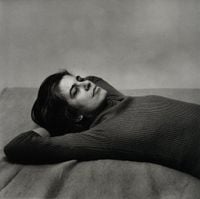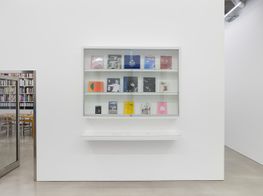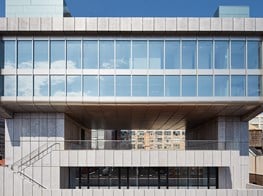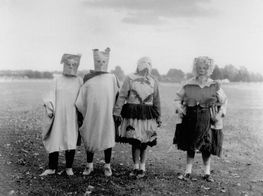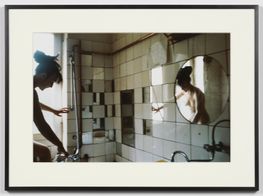Peter Hujar: The Show Must Go On

Peter Hujar, Drag Actress Backstage with Fan - Palm Casino Revue (1974). © 1987 The Peter Hujar Archive LLC. Courtesy The Peter Hujar Archive and Maureen Paley, London.
For 30 years, Peter Hujar photographed those at the creative margins of New York society. At a time when living could be subsidised with just a few days of 'work' per month, artists, writers, and performers flocked to a metropolis where subversive subcultural scenes were flourishing.
Hujar himself followed this trajectory. He left home at 16 to live with his English teacher, Daisy Aldan, who encouraged him to seriously pursue photography.1
Starting out by knocking on commercial photographic studios looking for any way in as an assistant, Hujar spent his free time absorbing advice from pioneers such as Diane Arbus at Richard Avedon's lauded 'Master Class' seminars. He soon became established—shooting fashion editorials for GQ and Harper's Bazaar—before dropping it all to focus on his own artistic work, refusing to compromise on his vision.
Before long, his tender approach to image-making quickly distinguished him from contemporary photographers—ingratiating him with iconic figures of the avantgarde such as William Burroughs, Fran Lebowitz, Merce Cunningham, Paul Thek, and Andy Warhol.
Meticulous in his technical approach, Hujar was a darkroom master. Known for consistently using the same square format film, his intention to take 'uncomplicated, direct photographs of complicated and difficult subjects' extended from pastoral landscapes to erotic nudes.
At Maureen Paley, Hujar's body of work depicting the remarkable, nocturnal drag scene in New York City between 1970–1987 exemplifies this philosophy.
Images capture subversive groups such as The Cockettes, who trekked from the bohemian counterculture of San Francisco to The Big Apple looking for success on the East Coast.
The theatrical troupe reinvented drag beyond female impersonation: whether male, female, straight, or gay, they dazzled and disturbed audiences with gender-bending performances, merging the improvisation of surrealism with the cheekiness of high school musicals, all the while kitted out in wild, psychedelic-flea market chic.
During the 'Mad Men' era of advertising, when heteronormative gender roles were blasted into televisions around the U.S.A., Hujar shone a light on those playing against the patriarchy.
From Mario Montez, Warhol's first drag 'superstar', draped in a feather boa in the Palm Casino Revue dressing room (Mario Montez Backstage at the Palm Casino Revue, 1974) to Charles Ludlam, founder of the Ridiculous Theatre Company, delicately putting his face on (Charles Ludlam backstage at "Galas", Ridiculous Theater Company, 1984), and a pouting Larry Ree, member of Les Ballets Trockadero de Monte Carlo, an all-male operatic dance troupe, readying himself for the St Mark's Christmas Pageant soirée (Larry Ree Backstage, 1973).
Empathetically capturing these radical performers backstage, works such as Drag Queen in Fashion Pose (Cockette Link Martin) and Cockette [Bearded Cockette] (both 1971) indicate how drag, as scholar Judith Butler's transgressive theory explains, 'establishes that "reality" is not fixed as we generally assume it to be' and that the purpose is to 'expose the tenuousness of gender "reality" in order to counter the violence performed by gender norms.'2
In a more subdued image (Divine, 1975), we find Glenn 'Divine' Milstead—an actor, singer, and drag queen who worked closely with John Waters, joining his acting troupe the Dreamlanders and starring in his most iconic films such as Pink Flamingoes (1972) and Female Trouble (1974). A celebrity and cult figure, Divine was known for pushing subversive humour onto audiences with sardonic quips. Here, he is framed in a moment of pre- or post-performance reflection, his generous curves on display, bound in tights, and no evidence of makeup, wig, or alter ego costume to be seen.
Emphasising Hujar's commitment to representing diverse subjects, Nan Goldin later revealed he 'had no obsession with youth or with any physical type; he found beauty and value in every stage of life, and grace in every variety of flesh.'3
It was in January 1987 that Hujar received an HIV diagnosis—at this point, an epidemic in the community—and a widely misunderstood disease. With no effective treatment available, Hujar died aged 53 from AIDS-related pneumonia in November later that same year.
...when heteronormative gender roles were blasted into televisions around the U.S.A., Hujar shone a light on those playing against the patriarchy.
While largely under-supported by museums in his lifetime, Hujar was recently platformed in a major touring exhibition, Peter Hujar: Speed of Life, beginning at the Fundación MAPFRE, Barcelona in 2017, travelling across three European and American institutions before ending at Jeu de Paume, Paris in 2020.
Speed of Life featured over 160 photographs made between the two bookmarks of Hujar's career, extending from just before the Stonewall uprising in 1969, to the peak of the AIDS crisis in the 1980s.
Among them, an array of iconic portraits, including actress Candy Darling dying in hospital with lymphoma (Candy Darling on Her Deathbed, 1973), Susan Sontag reclining peacefully in bed (Susan Sontag, 1975), and David Wojnarowicz cradling a cigarette (David Wojnarowicz, 1981).
The show provided a comprehensive reconsideration of Hujar's oeuvre, highlighting the variety of his interests and non-hierarchal approach to subject matter. From early, macabre images of corpses in the Palermo catacombs, to cropped renderings of Manhattan from the heights of the towering Rockefeller Centre all the way down to the piers—known as cruising spots—and the waves of the Hudson River.
Reflecting on his practice, Hujar once said, 'my work comes out of my life. The people I photograph are not freaks or curiosities to me. I like people who dare... I photograph those who push themselves to any extreme—that's what interests me—and people who cling to the freedom to be themselves.'
In photographs such as John Flowers Backstage at Palm Casino Review (1974), Hujar proved his ability to contain even the wildest of moments with a daguerreotype-stillness. Hujar said he was drawn to figures like this—'chic, but in a dark kind of way'—adding 'they are people I love, they are my friends.' As Stephen Koch, executor of the artist's estate, remarked in The Village Voice: 'this is classicism, without comfort.'5
In our present moment of forced isolation, when nightlife has been shuttered for an unprecedented amount of time, Hujar's work reminds us that beyond entertainment, subcultures; theatre, music, and performance—and their associative highs, lows, and everything in between—are a building block for community, creativity, kinship, and style. —[O]
1 Peter Schjeldahl, 'The Bohemian Rhapsody of Peter Hujar', The New Yorker, 29 January 2018, https://www.newyorker.com/magazine/2018/02/05/the-bohemian-rhapsody-of-peter-hujar
2 Judith Butler, Gender Trouble: Feminism and the Subversion of Identity, (Routledge: New York and London, 2011).
3 Frances Milstead, Kevin Heffernan, and Steve Yeager, My Son Divine, (Alyson Books: Los Angeles and New York, 2001), p.1.
4 Nan Goldin, Peter Hujar, Parkett, 1 July 1995, p.16.
5 Katherine Dieckmann, 'Double Exposure: David Wojnarowicz and Peter Hujar's Burnt Offerings', The Village Voice, 7 February 1995, p.13-14.

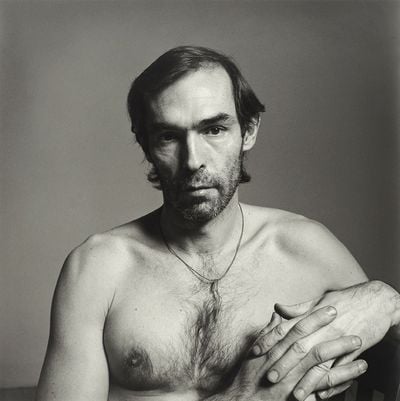
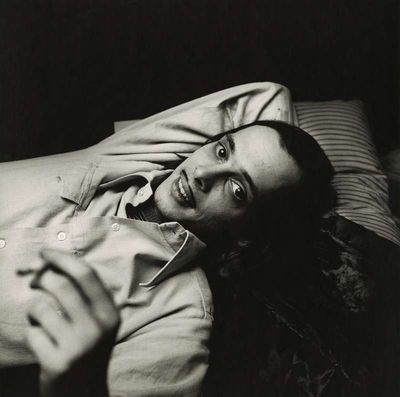
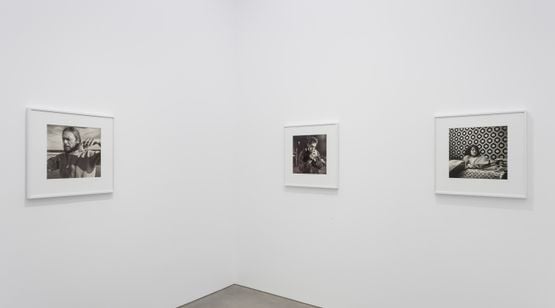
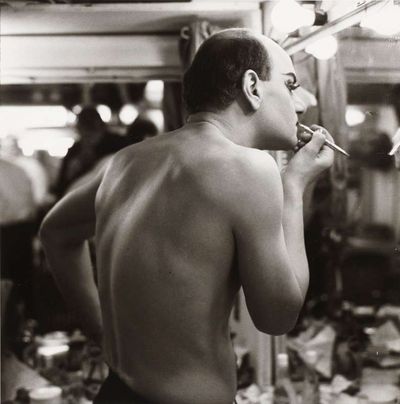
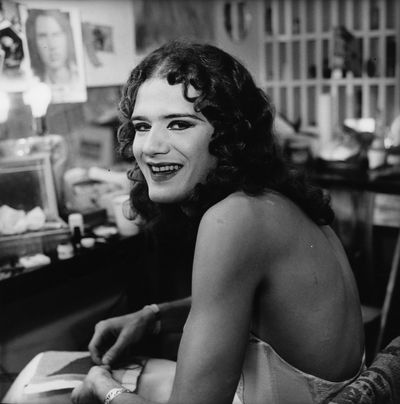
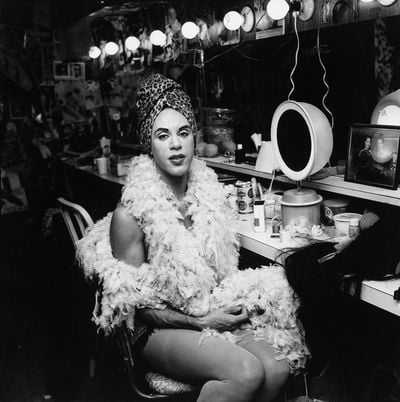
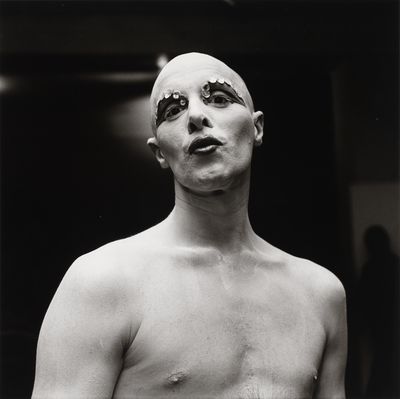
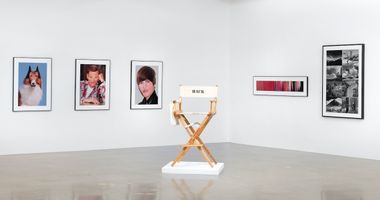
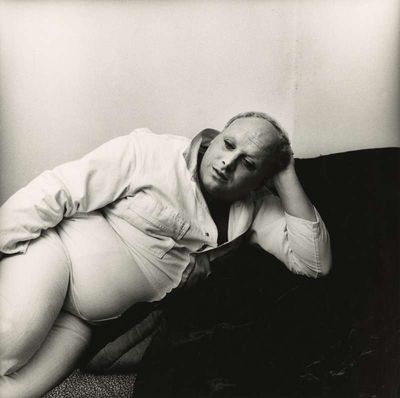
![Peter Hujar, Fran Lebowitz [at Home in Morristown] (1974). © 1987 The Peter Hujar Archive LLC.](https://files.ocula.com/anzax/Content/Reports/2021/Peter%20Hujar/MP-HUJAP-00155-A-072_400_0.jpg)
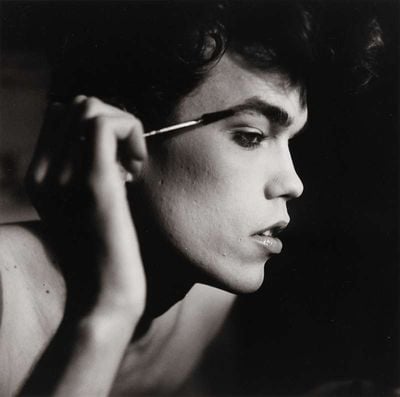

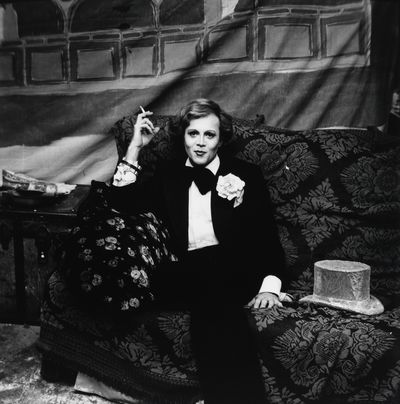
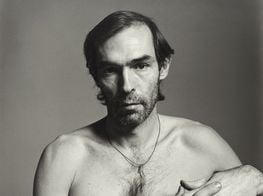



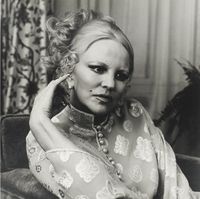
![Fran Lebowitz [at Home in Morristown] by Peter Hujar contemporary artwork photography](https://files.ocula.com/anzax/23/235fd4ff-f221-47da-a8de-81b3d6dba317_200_201.jpg)
